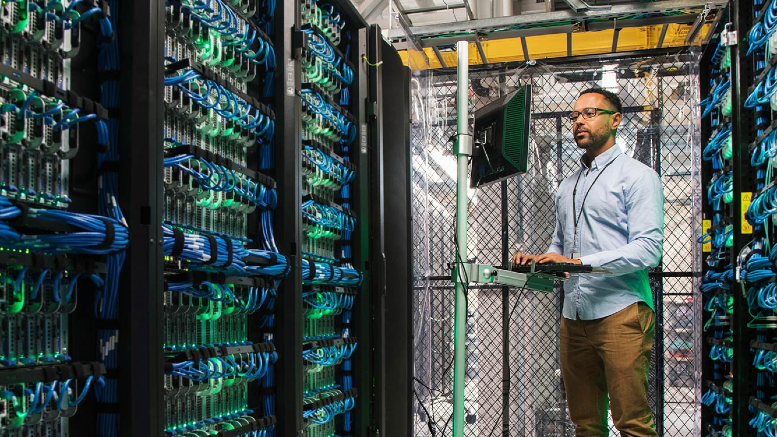Beyond the hybrid horizon: Balancing AI, data and security in today's workplace
July 30, 2024 / Mike Thomson
Short on time? Read the key takeaways:
- The workplace of the future is decidedly hybrid, with companies adopting varying degrees of remote work. This shift necessitates technology that enables seamless collaboration regardless of location.
- Companies can leverage AI and data telemetry to proactively improve service delivery, anticipate needs, and efficiently allocate resources in hybrid work environments.
- The expanded network of endpoints in hybrid workplaces increases security risks. Multi-factor authentication, advanced protective software, workforce education, and virtual barriers are essential for maintaining cybersecurity.
- The increasing volume and complexity of data in hybrid work environments require robust governance, including cost management, data retention policies, and data mapping strategies to maintain efficiency and effectiveness.
As hybrid work solidifies its place in the business world, organizations face critical challenges in balancing efficiency, security and cost control.
How are data requirements evolving, and how does this impact operations? How can companies leverage AI and data models more effectively? What cybersecurity concerns arise in this new landscape?
Mike Thomson, President and COO of Unisys, addresses these pressing issues. Drawing upon his extensive experience, Mike offers practical insights on managing data growth, implementing AI solutions and fortifying cybersecurity in today's dynamic workplace. His perspective provides valuable guidance for organizations adapting to the future of work.
Watch Mike's interview with Todd Pruzan, senior editor of research and special projects at Harvard Business Review Group, to complement these insights. This concise discussion highlights key strategies for navigating tech trends and cybersecurity in the modern workplace.
Visit “Navigating tech trends and cybersecurity in the modern workplace” to view the interview.
Workplace of the future
How is the workplace evolving in structure, especially with integrating hybrid models?
A: The workplace of the future is unmistakably hybrid. We're seeing a trend where companies are embracing varying degrees of hybrid work environments. Some are in the office three or four days a week, others maybe two, and some are fully hybrid or fully back in the office. The pivotal change here is the necessity for technology that supports associates working from anywhere in the world as seamlessly as if they were in the office. Companies need to coordinate more than tool interaction. It includes ensuring all aspects of collaboration are feasible, whether you're in the office, at home, or on the road. A few years back, this kind of flexibility was sporadic. Now it's the norm, and companies have had to adapt their tech to support both in-person and remote participants equally in all communications and decision-making processes.
Can you elaborate on the technological advancements supporting this shift to a hybrid workplace?
A: Certainly. The shift to a hybrid workplace has been accompanied by substantial advancements in both hardware and software. Rather than basic connectivity over platforms like Teams, connectivity includes Teams, Zoom, Blue Jeans and more. You have to facilitate both internal and external dialogues effectively. Every conversation, meeting, or webcast is potentially global now, reaching a broader audience than ever before. Therefore, the demand for interactive tools with robust uptime and minimal latency has skyrocketed. These tools have become the backbone of our operations; they need to be reliable and efficient because now, 'this is how we work.' It's a fundamental shift in our approach to technology in the workplace.
How can companies leverage AI and data models to enhance solution delivery in this hybrid work environment?
Most companies have adopted hybrid work depending on how much remote work suits their company’s strategy. All companies can leverage AI and data models to proactively enhance service delivery to their internal or external clients. Utilization of data telemetry from sources like physical location, device information, and user sentiment can help anticipate needs and efficiently allocate resources. AI's power to analyze large, disparate data allows companies to preemptively identify and resolve issues, enhance solutions and self-healing. This preventative focus leads to smoother operations, as well as a competitive edge in service delivery and a better hybrid work environment.
Infrastructure
Can you discuss the balance between reducing physical costs and managing increasing data-related expenses?
The hybrid model presents a cost-balancing challenge. While it offers potential savings on physical costs like office space, it increases data center and technology stack expenses. The enhanced need for data storage, management, and governance can create hidden costs. Companies will need to invest more in technology to manage increased data usage. Savings in one area might be redirected to bolster data capabilities. Additionally, the cyber aspect of remote work adds further cost. This dynamic environment requires continuous learning and adaptation to utilize resources in the evolving work landscape efficiently.
How are the evolving data requirements in the future of work impacting your organization's operations?
When we talk about the future of work, a significant aspect that comes up is the growth of data and data models. They're getting larger and more complex, which naturally increases consumption and storage needs. This continuous expansion of data has real implications for how organizations manage their resources. Companies must constantly evolve, calling for robust governance in areas like cost management, data retention policies, and the governance of data mapping. Adapting to these changes is vital for maintaining efficiency and effectiveness in a hybrid work environment. This shift towards meticulous data governance is an essential strategy for any organization looking to thrive in the dynamic future of work.
Cybersecurity
How do you address cybersecurity concerns in a hybrid workplace, especially with remote working becoming more prevalent?
In the hybrid workplace, every endpoint, including personal devices, extends the network, raising exposure risk. For example, a child’s Xbox on the same network can pose a threat. Robust security measures, including things like multi-factor authentication and advanced protective software, are essential. These are some of the physical aspects of cybersecurity. Another key layer involves educating the workforce on cyber threats, coupled with monitoring and governance. Prevention of cyber events is a team sport. Lastly, creating a virtual barrier to shield work-related connections from personal environment vulnerabilities is also crucial.
With the evolution of technology in the workplace, how can companies manage the cybersecurity risks that come with creating large data sets and diverse data sources?
Well, the thing is, cybersecurity becomes a primary concern when you're pulling in data from a multitude of sources to improve user experiences. This process often involves creating dynamic data models for knowledge databases, which is crucial for problem-solving and support. But with this, you end up accumulating a lot of personal information. For example, consider a Teams call where every participant's IP address is recorded. When consolidating such diverse data, companies bear a significant responsibility to safeguard this information. The central principle is a heightened awareness that with each piece of data collected, there's an inherent duty to protect the individuals' privacy and security involved in that data.
Learn more
Accelerate your success in the modern workplace with Unisys. Transform your workplace into a powerhouse of efficiency and innovation with Unisys. Our expertise in hybrid work, IT optimization and cybersecurity can help you build a resilient, future-ready organization. Let's collaborate to bring your vision to life.




















